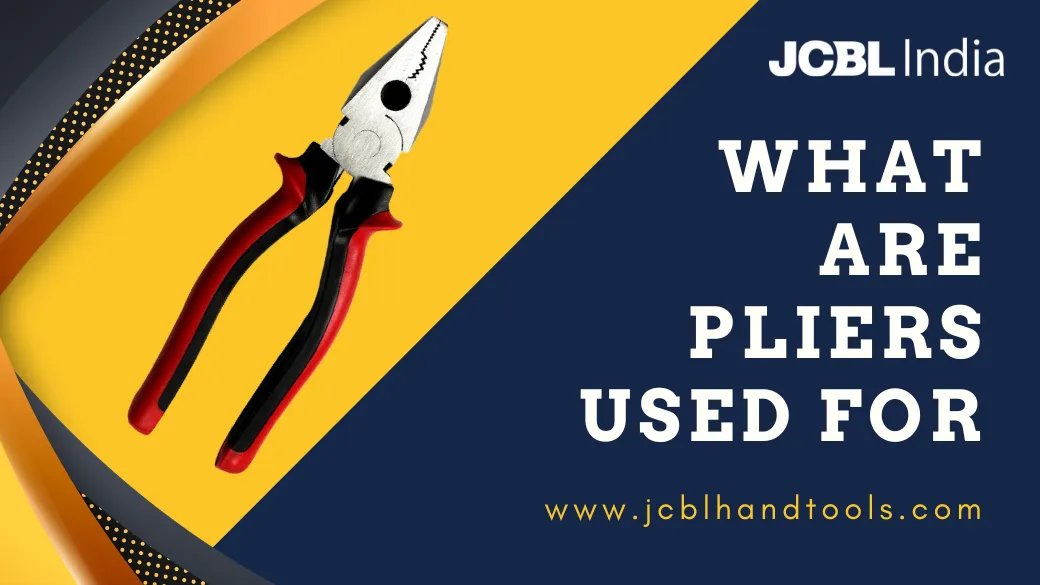The Rights & Wrongs Of Using Pliers & Pincers

Pliers are hardware instruments that come in various sizes and are used for various purposes. Pliers are used for twisting wires and combination pliers manufacturer companies produce combination pliers for several tasks. There are various types of pliers in the market including Lineman’s pliers, Long nose pliers, Utility pliers, Diagonal cutting pliers, etc.
Each plier has its application and uses in troubleshooting a mechanical problem. For instance, diagonal cutting pliers are used for cutting wires and removing pins, nails, and fasteners. While a lineman’s pliers are used for several applications like electrical, construction, and communications work. Pincers are mechanical tools that are mainly used to pinch or cut an object. They differ from pliers in the way it is being used. Pincers apply their force to a particular point or towards an edge that stands perpendicular to the tool.
Safety guidelines on how and how not to use pliers or a pincer tool.
- Use pliers between 6cm to 9cm for safety:- Always choose pliers that have a span of 6 cm to 9 cm so that you can avoid your palms from getting crushed when tools are closed.
- Prefer adjustable pliers for a comfortable grip:- The use of adjustable pliers is preferred which provides a comfortable hand grip to grip the handpiece.
- Maintain your pliers:- Maintain your pliers so that the cutting edges are sharp. Dull and worn-out cutting edges may need extra pressure to do a job which may result in injury.
- Wearing safety glasses:- Goggles are advisable as they can protect your eye from flying objects or pieces of wire from cutting.
- Carpenters nail pincers:- Traders produce pincers that need proper precaution while handling metal objects.
- Always cut at right angles:- One of the common mistakes is when they try to rock the cutting tool side to side to cut a wire. Always make sure to cut at right angles for a proper cut.
- Buy needle nose pincers that are used for seizing and manipulating small pieces of wire.
- Oil pliers and pincers regularly for good maintenance. Just a drop of oil in the hinge areas will ensure smooth operation.
- The best way to handle pliers is by pulling on the pliers rather than pushing them away by applying pressure. The latter technique can make way to injury as you may slip unexpectedly to crash yourself on the equipment.
- Never use pliers to do a hammer’s job. It may damage your pliers and also potentially harm you by striking on the object.
- Use the designated pliers for a particular job. There are various types of pliers, therefore ensure that you are using the right pliers for the job. For instance, carpenters and nail pincers traders produce pincers that are specifically designated for removing nails.
Also Read: How To Use A Hammer Safely?
Things to avoid while using pliers or pincers
- Do not expose your pliers to excessive heat. Pliers are sensitive materials that change if exposed to heat.
- Try to avoid bending the stiff wire with light pliers. Always use the plier’s tool that matches the job.
- Pliers are not used for nuts and bolts; use a wrench for such purposes.
Recommended: 8 Best Woodworking Hand Tools You Need For Carpentry!
Conclusion
While pliers and pincers aid in construction and repair jobs, improper handling risks damage and injury. Choosing designs suiting needs, maintaining sharp gripping edges, applying right angles of force, and avoiding hammer substitutions set safe usage foundations. Additionally, wearing goggles and oiling joints periodically promotes durability. In addition to this, use the hardware instruments safely as per the instructions and avoid unnecessary injury.



